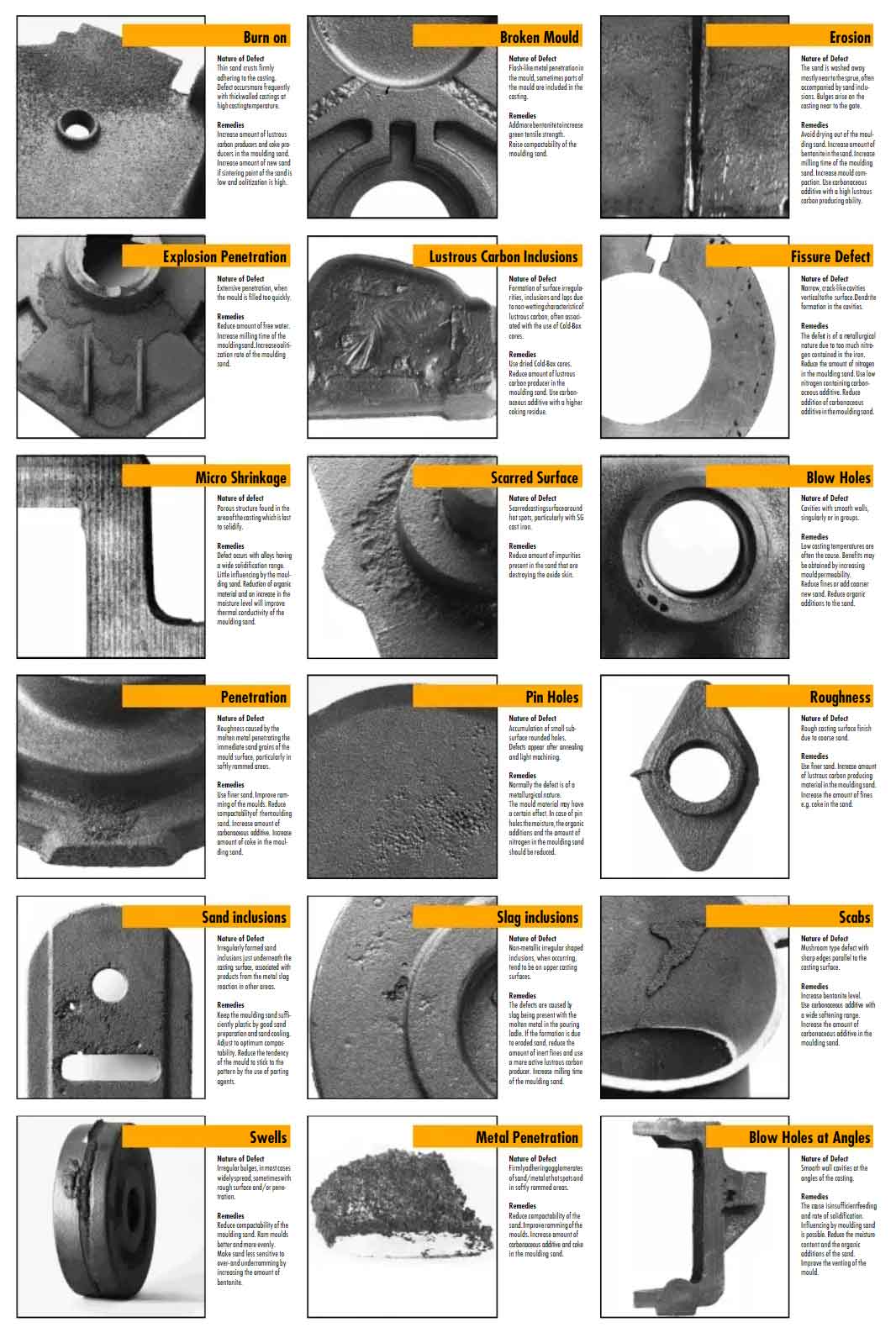Inclusions and shrinkage are two common casting defects that can occur due to solidification-related issues. Addressing these defects is crucial to ensure the quality and integrity of castings. Let’s discuss strategies for tackling inclusions and shrinkage in the casting process:

- Inclusions:
- Proper Melting and Metal Treatment: Ensure that the melting process is conducted under controlled conditions to minimize the introduction of impurities. Employ suitable metal treatment techniques, such as refining, degassing, and desulfurization, to remove impurities and non-metallic inclusions from the molten metal.
- Filtration: Use ceramic filters or other suitable filtration methods to trap and remove inclusions from the molten metal before pouring it into the mold.
- Mold Design and Preparation: Design the mold with consideration for proper gating and risering systems to allow the molten metal to fill the mold cavity smoothly. Use appropriate mold coatings or liners to reduce the likelihood of inclusions caused by mold-metal interactions.
- Proper Pouring Techniques: Employ controlled pouring techniques to minimize turbulence and the introduction of oxides or contaminants, which can lead to inclusions.
- Material Selection: Choose casting alloys that have a low propensity for forming inclusions and match the material properties to the requirements of the casting.
- Shrinkage:
- Proper Gating and Riser Design: Design an optimized gating and risering system to ensure adequate feeding of molten metal to compensate for solidification shrinkage. Properly placed and sized risers can act as a reservoir of molten metal to supply additional material during solidification.
- Chills and Cooling Techniques: Incorporate chills or cooling devices strategically in the mold to promote directional solidification and control the rate of solidification. This helps prevent shrinkage defects by allowing the casting to solidify uniformly.
- Mold Preheating: Preheating the mold can help reduce thermal gradients and ensure more even solidification, minimizing the risk of shrinkage defects.
- Process Control: Implement strict process control measures, including monitoring and controlling the pouring temperature, cooling rates, and solidification time, to prevent rapid solidification and associated shrinkage defects.
- Simulation and Modeling: Utilize casting simulation software to predict and analyze shrinkage-related issues and optimize the casting process parameters to minimize shrinkage defects.
- Quality Control and Inspection:
- Non-Destructive Testing (NDT): Employ NDT techniques such as X-ray, ultrasonic testing, or liquid penetrant inspection to detect and identify inclusions and shrinkage defects.
- Visual Inspection and Dimensional Control: Perform regular visual inspections of castings to identify any visible inclusions or shrinkage defects. Use dimensional control methods to ensure the castings meet the required specifications.
- Continuous Improvement:
- Data Analysis and Documentation: Analyze the occurrence of inclusions and shrinkage defects, identify the root causes, and document the findings. This information can guide process improvements and preventive actions.
- Collaboration with Suppliers: Work closely with material suppliers to ensure the quality and consistency of the casting alloys, as well as to address any material-related issues that may contribute to inclusions and shrinkage defects.
By implementing these strategies, foundries can effectively address inclusions and shrinkage defects in castings, leading to improved quality, enhanced structural integrity, and reduced scrap rates.
